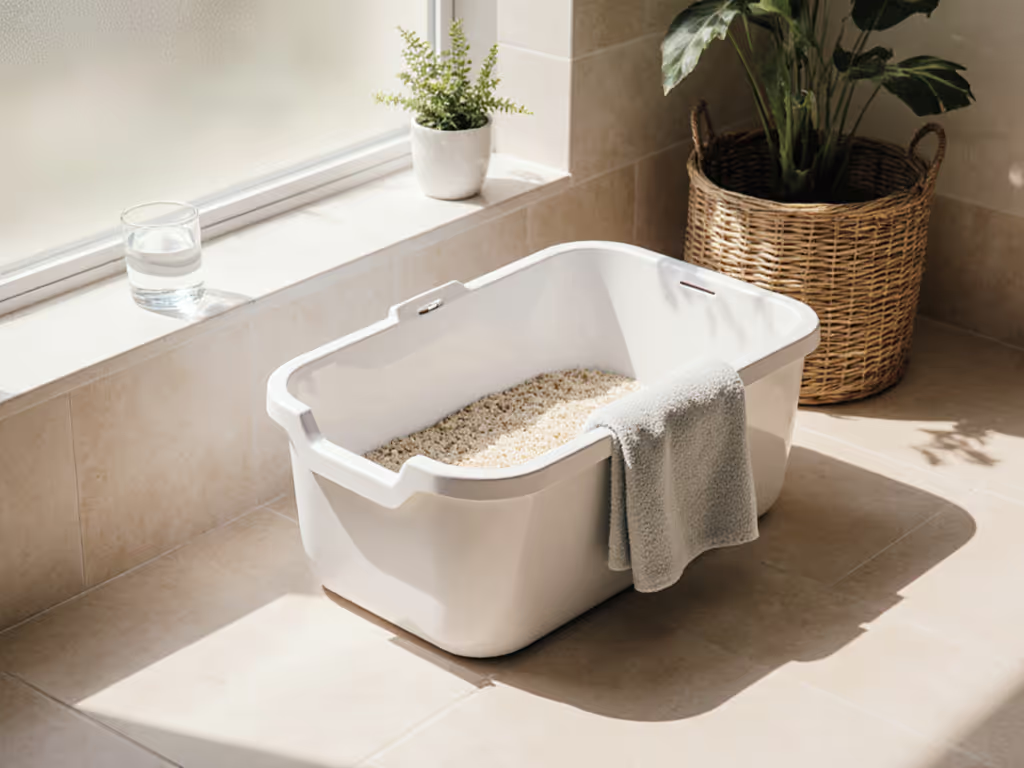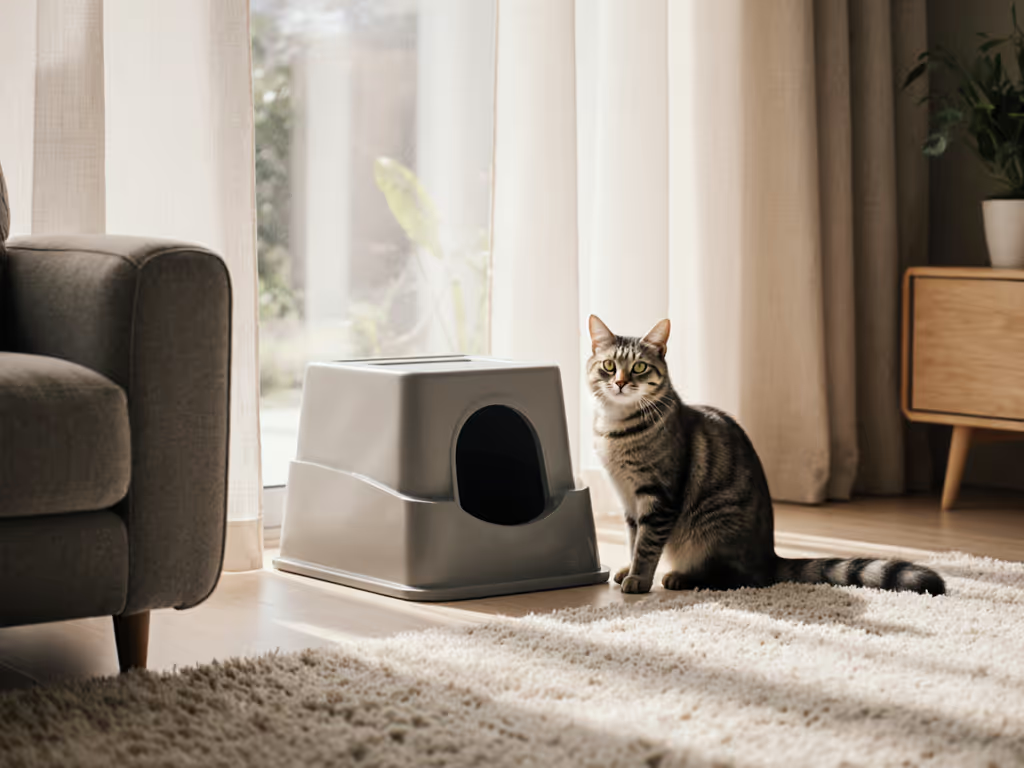
Litter Box Fixes for Feline Urinary Health & UTIs

Why Your Cat's Litter Box Is the First Line of Defense for Urinary Health
When your cat avoids the litter box or shows signs of discomfort while using it, urinary health litter box management becomes urgent. Left unaddressed, these issues can escalate into painful urinary tract infections (UTIs) or chronic kidney problems. For time-pressed urban cat guardians, solving cat UTI litter issues is not just about convenience, it is a critical health intervention. Most cat parents don't realize how closely litter box conditions directly impact their cat's urinary system. A single unresolved accident can trigger a cycle of stress, avoidance, and worsening health. But with behavior-first adjustments, you can break this pattern while keeping your small-space home fresh and functional.
The Hidden Link Between Litter Boxes and UTIs
Cats are masters at hiding illness, but urinary issues often announce themselves through litter box behavior. That 10 percent of cats who develop litter problems (per Alley Cat Rescue data) is not random, it is frequently tied to medical discomfort. When a cat associates pain with elimination, they'll avoid the box entirely. If your cat has started avoiding the box, see our litter box avoidance solutions to reset habits without added stress. This creates a dangerous loop:
- Dirty boxes = bacterial breeding grounds. Urine sitting in litter lets ammonia build, irritating sensitive paws and urinary tracts.
- Stress suppresses immunity. Multi-cat tension over box access or abrupt litter changes elevates cortisol, making cats prone to UTIs.
- Poor substrate choice masks health clues. Highly scented litters or dark-colored crystals hide urine color changes that signal infection.
Why your cat cares: A cat recovering from a UTI may reject a litter box that smells of illness because it triggers pain memories. They're not being difficult, they're self-protecting.
Solving Urinary Health Through Behavior-Aligned Setup
Placement Strategy: Your Invisible UTI Shield
Cats vote with paws, not product pages or promises.
Boxes in high-traffic zones or near loud appliances create chronic stress. For urinary health, this is non-negotiable:
- The 1+1 Rule: Minimum of one box per cat plus one extra. Example: 3 cats = 4 boxes. Place stations on separate floors or room corners to prevent resource guarding.
- Escape Routes: Position boxes against walls with open sightlines. Cats need to see threats while eliminating, and corner traps trigger anxiety-induced urinary retention.
- Quiet Zones Only: Avoid washer/dryer rooms or hallways. Opt for low-traffic closets or bathroom corners. I've seen timid cats accept boxes placed under furniture when other stations felt exposed.

Substrate Science: Making Health Visible
Clean box importance for urinary health starts with what is in the box. Clumping litter is not just convenient, it is diagnostic. When litter forms tight, separate clumps:
- Urine volume and color become visible (pale yellow = healthy; orange = acidic warning)
- You detect blood traces missed in crystal or non-clumping litter
- Bacterial growth slows in drier environments
Skip these UTI risks:
- Scented litters (mask infection odors and irritate airways)
- Overfilled boxes (deep litter discourages thorough digging, leaving urine in contact)
- Dark-colored crystals (hide color changes that indicate frequent urination and need attention) If dust is also a concern, compare low-dust litters to protect airways while keeping urine clues visible.
Instead: Offer unscented, medium-grain clumping litter at 1-2 inches depth. It provides texture cats prefer while revealing health clues. For senior cats with arthritis, a finer-grain senior-formula litter can reduce paw strain (but only if your cat accepts it). Never force a change.
Maintenance Metrics: Your Proactive UTI Prevention
Scooping is not a chore, it is health monitoring. For a full schedule that keeps odors down and cats comfortable, follow our litter box cleaning frequency guide. Follow this timeline:
| Timeline | Action | Urinary Health Benefit |
|---|---|---|
| Daily | Scoop twice (AM/PM) | Reduces ammonia exposure by 80% versus once daily |
| Weekly | Full litter change + warm water rinse (no soap) | Prevents odor-causing bacterial colonies |
| Monthly | Rotate 1 box location by 6 inches | Resets territorial marking without disrupting routine |
Why your cat cares: A cat with a history of UTIs will avoid boxes that smell strongly of old urine, even after cleaning. Baking soda rinses neutralize lingering odors without chemical aversion.
Behavior-First Transitions: When Change Is Mandatory
If your cat shows UTI symptoms (straining, blood-tinged urine), your vet may recommend a specific litter. But sudden switches backfire. Use this 7-day protocol:
- Day 1-3: Place new litter in additional box (not replacing current). Keep current litter accessible.
- Day 4-5: Mix 25% new litter into one existing box. Monitor usage.
- Day 6-7: Gradually increase ratio only if the cat uses the mixed box consistently.
I once helped a multi-cat household transition a UTI-prone cat by starting with an under-bed storage bin lined with her preferred litter. Over a week, we gradually raised the sides while maintaining scent familiarity. No accidents, no stress, and clearer health monitoring. Solutions for frequent urination succeed when cats lead the pace.
Your Actionable Next Step: The 10-Minute Box Audit
Tonight, spend 10 minutes evaluating your setup against these urinary health benchmarks:
- Count boxes: Do you have at least [number of cats + 1] stations?
- Check sightlines: Can cats see room entrances while in boxes?
- Test depth: Is litter 1-2 inches deep (not 3-4 inches)?
- Verify cleanliness: Scooped within the last 12 hours? No ammonia smell?
If any fail, prioritize one fix tonight. For example: Place a washable mat under your current box to contain tracking, which prevents litter scatter that complicates UTI monitoring. Clean accidents immediately with enzymatic cleaner (never ammonia-based!).

Pieviev Double-Layer Cat Litter Mat
Tomorrow, observe which box your cat uses first. Their choice reveals their preferred zone, so place your next strategic station nearby. Small adjustments build trust faster than expensive gadgets. The best litter system is the one your cat uses consistently without stress. Because when cats feel safe eliminating, urinary health stays on track, and you'll breathe easier too.
Cats vote with paws, not product pages or promises. Start where they are, not where you wish they'd be.




